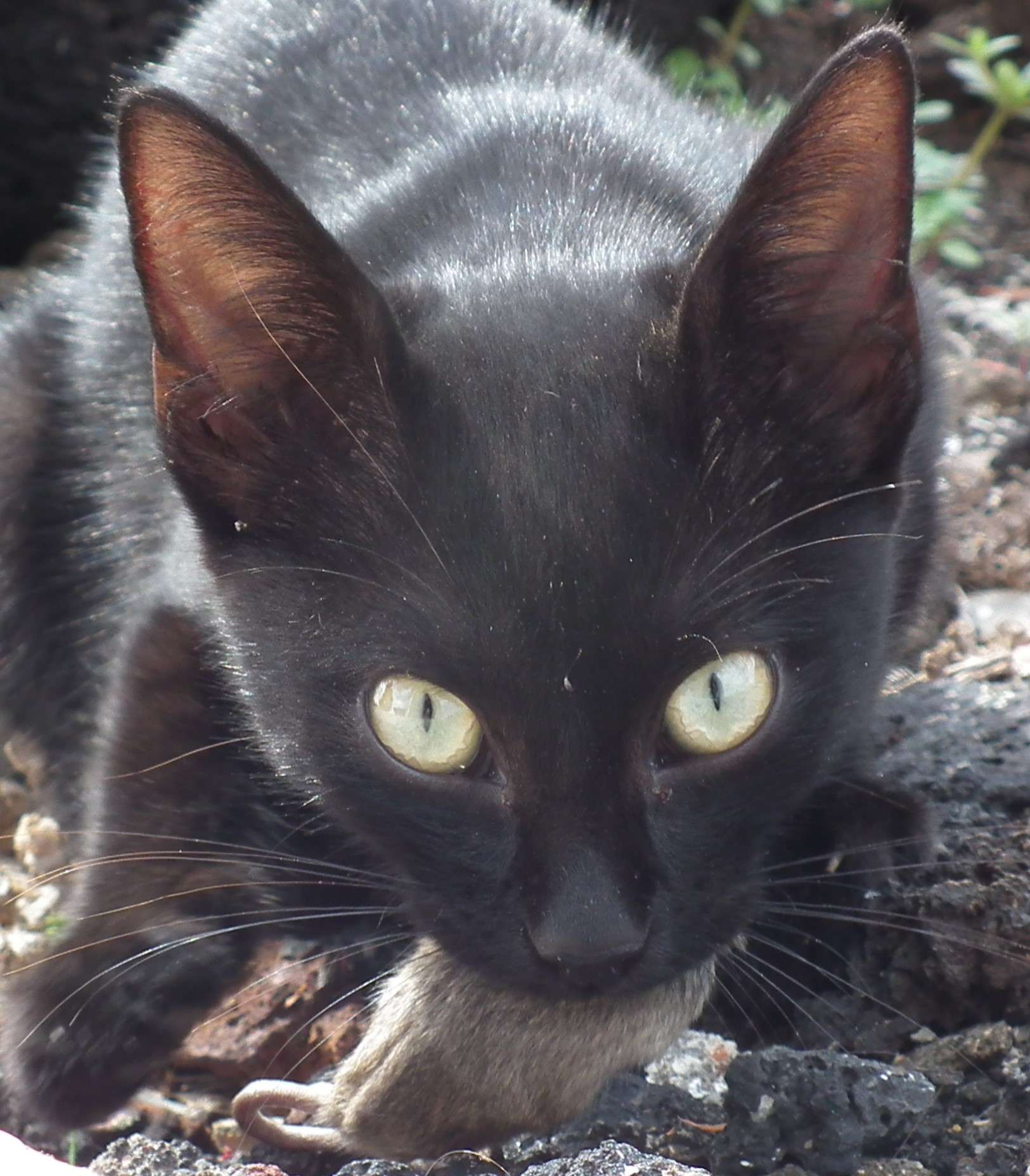Create a free profile to get unlimited access to exclusive videos, sweepstakes, and more!
Bad kitty! Chemical analysis of cat whiskers reveals cats kill because they can

You can take a cat out of the wild, but you can’t take the wild out of a cat. That’s what research by Dr. Martina Cecchetti and colleagues tells us about the hunting behaviors of domestic felines. Their findings were published in the journal Ecosphere.
It’s pretty well understood that free-ranging domestic cats present a threat to wild birds and small mammals. It’s estimated that cats kill 2 billion birds and 12 billion mammals each year, just in the United States. Understanding why they do this, and to what degree captured prey accounts for dietary needs, was the focus of the study.
Cecchetti and team recruited volunteers living in Southwest England — owners of cats who were typically free-ranging and exhibited hunting behavior, typically noted by the return of prey animals to the home — for a months-long study to quantify dietary and behavioral drivers for predation.
The cat’s owners were asked to remove any preventative device, bells, Birdsbesafe collars, etc., which might interfere with the successful hunting of prey animals. Owners then recorded all prey animals which were brought home for a period of seven weeks. Cats were then broken into trial groups and given one of a set of preventative measures in order to determine what devices or behavioral strategies best minimized predation. These measures included noise-making collars to warn prey animals, high-protein foods, puzzle feeders, and dedicated active play time.
The owners collected and froze any wild prey which was returned home for later collection and analysis by the study team. The research found that some of these methods were effective at reducing hunting behaviors or the successful capture of prey animals.
“In this study the Birdsbesafe collar cover was the intervention that most reduced the consumption of wild prey,” Cecchetti told SYFY WIRE. “The most effective treatments were high-meat content food and object play. These novel methods reduced the tendency to hunt, rather than impeding hunting.”
To measure the distribution of provided food and wild prey consumption, the team clipped whiskers from a subset of participant animals and analyzed them. Whiskers were clipped at the beginning of the study to provide a baseline, and again at the end to measure differences as a result of intervention.
As food is consumed, identifiable markers are incorporated into keratinous tissues, like fur and claws. Whiskers were chosen as the analysis medium because they can be harvested relatively non-invasively when compared to claws, and because their length offers a longer diet record relative to comparatively short fur.
Prey animal samples, as well as provisioned food samples were freeze-dried and ground down to a powder. The powder was then analyzed using mass spectrometry to identify the ratio of isotopes present. Whiskers were then analyzed for those isotope distributions to determine what portion of the diet came from each source.
Even in those animals which did successfully capture prey, the study found that prey animals accounted for a staggeringly small proportion of overall dietary consumption. The diet of domestic cats consists almost entirely of food provided by humans, with only 3-4% coming from captured prey.
This indicates that predatory behavior is likely a result of instinct or stimulation, and not driven by dietary deficiency. “Provided food is a readily accessible and secure food source compared to wild prey. If you think about the hunting sequence, made up of searching, finding, capturing, cleaning, and eating the prey, it’s quite demanding and not always successful. Modern manufactured pet foods are also highly palatable and contain various food enhancers that make pet foods probably more enjoyable,” Cecchetti said.
All told, the results indicate cats hunt not to fill any dietary gap, but because they are driven by instinctual motives, and because they can. Which, to anyone who’s spent more than a few minutes the mercy of a cat’s adorable ferocity, is not the least bit surprising.















